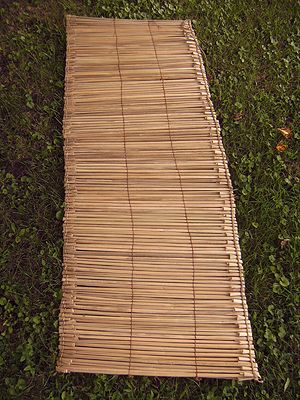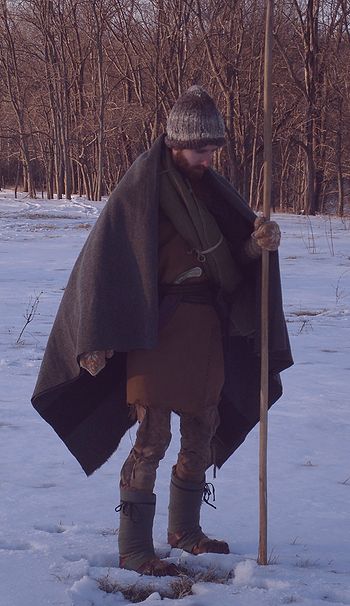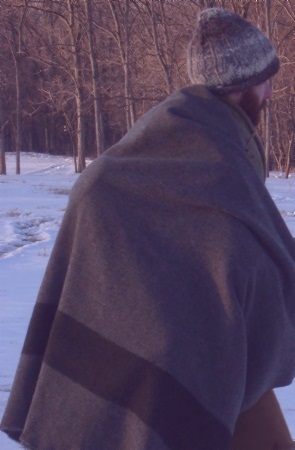Áistan: Sleeping
Sleeping Items.
“Then baa-baa-baa! was heard, and in came some snow-white sheep led by a large coal-black ram.” (TH 125).
“For [Bilbo] there was a little mattress of straw and woolen blankets.” (TH 127).
“…the others were unrolling blankets and making beds…” (FotR 351).
“Gimli shivered. They had brought only one blanket apiece.” (TTT 37).
Aside from the “blankets” of the Fellowship, no other description is given of the sleeping gear carried in the field by Tolkien’s heroes, and as heroes, they are often possessed of superhuman abilities. However, not only am I portraying a ‘common’ Man, I am a common Man!: I would prefer not to die of hypothermia due to dogmatic adherence to Tolkien’s single-blanket-using superheroes. Additionally, I live and range in an area of moist woodlands in which I cannot always count on dry leaves for bedding/insulation.Despite these challenges, my sleeping gear is still quite simple.
In all seasons, I carry a 6x6’ linen sheet. In summer (night temps ~65°F and up), this is all I really need to keep off the chill of early morning. From autumn through late spring, it provides an extra layer of insulation and keeps the itchy wool of my grey blanket off me. In lieu of a ‘four-point’ blanket of proper thickness and a ready source of dry leaves, in winter I make do with a grey, five-pound (nearly-threadbare) ‘four-point’ Hudson Bay blanket (ebay, $65), a small, green, four-pound, hand-woven blanket, and a handmade two-pound sleeping mat of cattail leaves*. For a pillow I use a spare tunic, which rides in my pack.
- * My cattail mat—although I cannot document it specifically based on Tolkien's writings—is at least justifiable in the Anduin cultural sphere, knowing that Beorn's furniture was made with "wide rush-bottoms". Rushes—as in, bulrushes—likely refer to something like cattail or Tule, and reeds and “great rushes” grew in the (relatively) nearby Gladden fields (UT 287).
The example of Beorn’s furniture shows that these resources are being utilized practically, and in all likelihood, a woven seat-bottom is much more sophisticated than the bundle of leaves tied together (which is all my sleeping mat really is).
A quarter of the grey blanket is reserved for lying upon the mat, and the remaining ¾ is divided in half and pinned to the green blanket with large honey locust thorn pins. This gives a wide triple-thickness section to keep the chill airs off me, while the cattail mat and blanket-quarter keeps my body heat from being sapped by the ground I am sleeping on (preferably supplemented by a nest of leaves for an incredibly comfortable ‘mattress’).

For sleeping in high buggy summer, the thinness of my grey blanket is really an advantage: I can lie on my cattail mat with the blanket fully unfolded over me, keeping the various insects (mosquitoes, midges, neekerbreekers, &c.) off me!
For traveling in most months I roll my grey blanket into a ‘horseshoe’ shape, bind it up with thongs of buckskin and secure the ends together with a simple leather strap and buckle. This method works in warm weather by keeping me ventilated and cool, and in cooler months by keeping me from overheating—I am a proponent of starting a day’s travel while slightly uncomfortably cold, because I know I will shortly warm up via exertion. In very cold months, however, I fold the larger blanket in half and pin it with an iron pennanular brooch about me as a ‘cloak’, leaving the smaller green blanket in a horseshoe underneath. While this gives me a definite hunchback appearance, it is completely worth it!
While this gives me a definite hunchback appearance, it is completely worth it!
In any season, my sleeping mat rides comfortably beneath my backpack.


